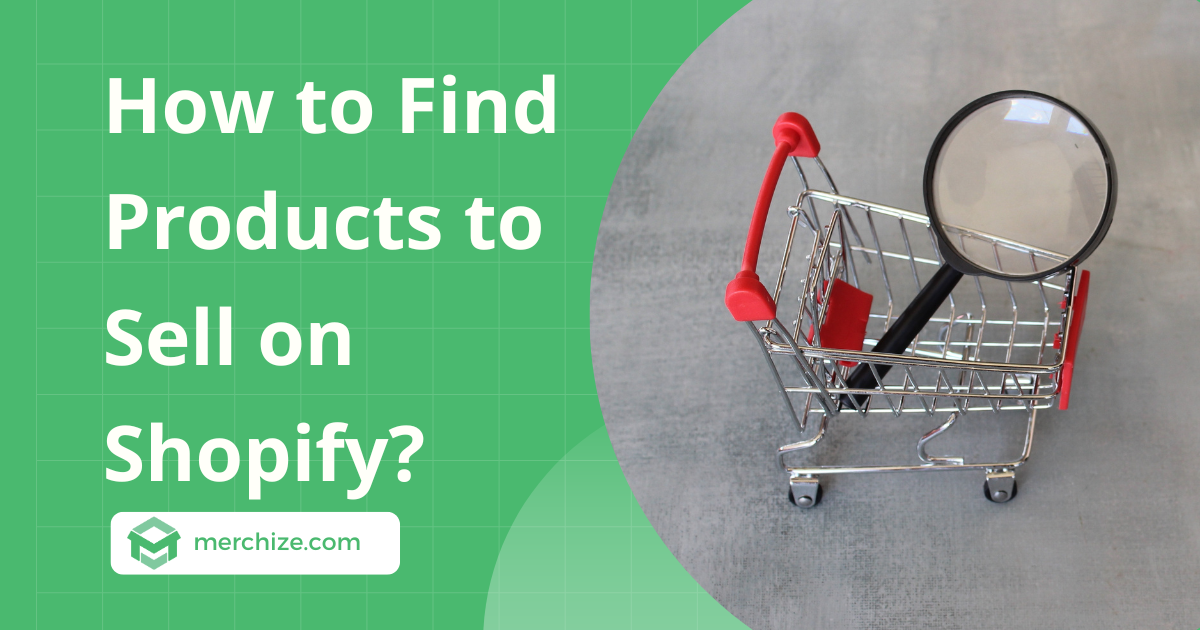Shopify opens a new world of possibilities for online e-commerce businesses. With Shopify, you have the freedom to choose the type of products that you want to sell. Moreover, you can gain more flexibility when it comes to product sourcing. To help you find your success with Shopify, today, let’s explore all the possible ways to find products to sell on Shopify.
There are new products every day. To keep your business ahead of the curve, you must always be on the outlook for new, potential products. With that in mind, here are the top places to find great products to sell on Shopify. Note down these valuable sources and make it your routine to visit and browse those places to get new product ideas for your online store.
1. Google
Google is the starting place for nearly everything online searching journey, especially when you have no idea where to begin with. You shouldn’t underestimate the power of Googling when it comes to seeking new potential products.
For example, if you are looking for suppliers for your own apparel clothing brand, you can type keywords like “fashion dropshipping supplier”, “fashion supplier near me”, or “fashion suppliers in (your location)” to get relevant results. On the result pages, you can easily find multiple companies or websites that provide the information that you need. From there, you can expand your research to see what types of products these suppliers have to offer.
This is a simple way to resource your products. Simple as it seems, searching on Google can sometimes lead you to wonderful suppliers with impressive products that you never heard of before.
2. Online business forums
Besides scouting the internet for product ideas for your Shopify store, you can also leverage the power of online business forums to your advantage. These online spaces offer valuable opportunities to connect to experts and other fellow entrepreneurs who might know something that you don’t.
Don’t be shy to join the online community and raise your questions. You can also browse popular online discussion forums like Reddit or Quora to find similar questions to your concerns. Besides, you can also join related Discord channels, Facebook groups, or other online communities to get new updates and discuss new ideas with others.
3. B2B marketplaces
B2B marketplaces are the best place to source your products. Instead of finding scattered products from different manufacturers, on these marketplaces, you can easily search for the manufacturers that provide the range of products that you are looking for. They can provide a specific product and a solution to your product sourcing.
Most of these marketplaces feature useful tools that make your search process much easier. With an extensive network of thousands of suppliers and manufacturers from across the world, these platform makes your search process much easier. Moreover, with useful tools, you can easily filter out the suppliers to match your reference.
On the B2B marketplace, you can also connect directly with the manufacturers and send your queries about the products and services.
- Wholesale marketplaces: Websites like Alibaba, AliExpress, and DHgate offer a wide range of products from manufacturers and wholesalers worldwide. You can browse through their catalogs, connect with suppliers, and negotiate pricing and terms.
- Dropshipping platforms: Platforms like Oberlo, Spocket, and Modalyst integrate directly with Shopify and provide access to thousands of products from dropshipping suppliers. You can import products seamlessly to your Shopify store and fulfill orders automatically.
3. Social media
You might not think of social media as the place to find new products or suppliers. However, if you are not using social media with the intention of searching for new products, you are missing opportunities to reach out to new potential suppliers.
Suppliers and even manufacturers are paying more attention to building their social following. For example, many of them are growing social communities on Facebook, YouTube, Instagram, LinkedIn or Discord. By joining and following suppliers’ social profiles, you can get the latest updates about their new products as well as ask for assistance from other group members or their customer service team.
Plus, through these social platforms, you can also validate the legitimacy of a supplier. If they have a professional, regularly updated social profile and an active community, it’s a sign that they are reliable.
Moreover, if your activities on social media show your interest in working with dropshipping Shopify, Facebook should notice and distribute related ads to your newsfeed. You will be able to see suppliers who are running ads on this platform and update discount news and attractive deals.
4. Trade shows
Besides the online space, offline channels, like trade shows, for example, are a fantastic, rewarding approach. Trade shows are places where you can connect with suppliers from nearby areas, or even from other countries.
Other than finding new suppliers and products, trade shows also provide a wonderful opportunity for you to update new technologies and understand what’s going on in the industry. You can learn new things about product manufacturing, observe future trends, and get inspired!
Trade shows are unique opportunities that allow you to extend your search beyond the screen and get in contact with real people working on the supply side.
5. Competitors
Keeping an eye on your competitors is a must in every business survival book. As soon as you have an idea of the type or category of products that you want to sell, just go on and do your research as a regular customer to see what competitors are offering those products.
After a time in the market, you might have your list of competitors that you should regularly check out for their new releases and updates. This is incredibly important to keep you and your business up-to-date and competitive.
6. Supplier lists
To get your information source focused and well-sorted out, you might want to keep a list of suppliers for each category. The list could include dropshipping suppliers, print-on-demand suppliers, local suppliers, and manufacturers. Include their social handle and contact information for easy access. For example, you can schedule periodic checks to make sure you’re not missing out on anything.
If you’re interested in selling custom-designed products like apparel, accessories, or home decor, consider using print-on-demand services. Companies like Merchize can offer seamless integration with Shopify and allow you to create and sell custom products with no upfront inventory costs. In case you want to start your print on demand business, this is the list of the best print on company suppliers to start with.
Other than relying on your self-compiled list, there are also many sources online where you can get the list of all suppliers for different locations or product categories. However, remember that these lists might be biased and insufficient. To have a reliable, focused, and exhaustive supplier list, you should curate your database.
7. Online retailer marketplaces
Retailer marketplaces are at the forefront of every product search. These platforms are where the customers go to search for what they need. With the help of analysis tools, you can easily detect the hot-selling products within the niche of your Shopify shop.
Utilize product research tools like Jungle Scout, Helium 10, or AMZScout to identify trending products, analyze market demand, and find profitable opportunities across various niches.
8. Local Suppliers
If you’re interested in selling custom-designed products like apparel, accessories, or home decor, consider using print-on-demand services. Companies like Printful, Printify, and Gooten integrate with Shopify and allow you to create and sell custom products with no upfront inventory costs.
- Local suppliers and manufacturers: Explore sourcing products locally from manufacturers, artisans, or wholesalers in your area. Attend trade shows, visit local markets, or network with other business owners to discover unique products that you can sell on Shopify.
- Local artisans and crafters: Partner with local artisans, crafters, or small businesses to sell their handmade products on your Shopify store. This can be a great way to offer unique, locally-made products that appeal to your target audience.
From leveraging online resources like Google, social media, and B2B marketplaces to exploring offline channels such as trade shows and local suppliers, there are numerous avenues to discover unique and profitable products. By incorporating a diverse range of sourcing methods and staying attuned to market trends, Shopify sellers can build successful online stores and thrive in the competitive e-commerce landscape.









